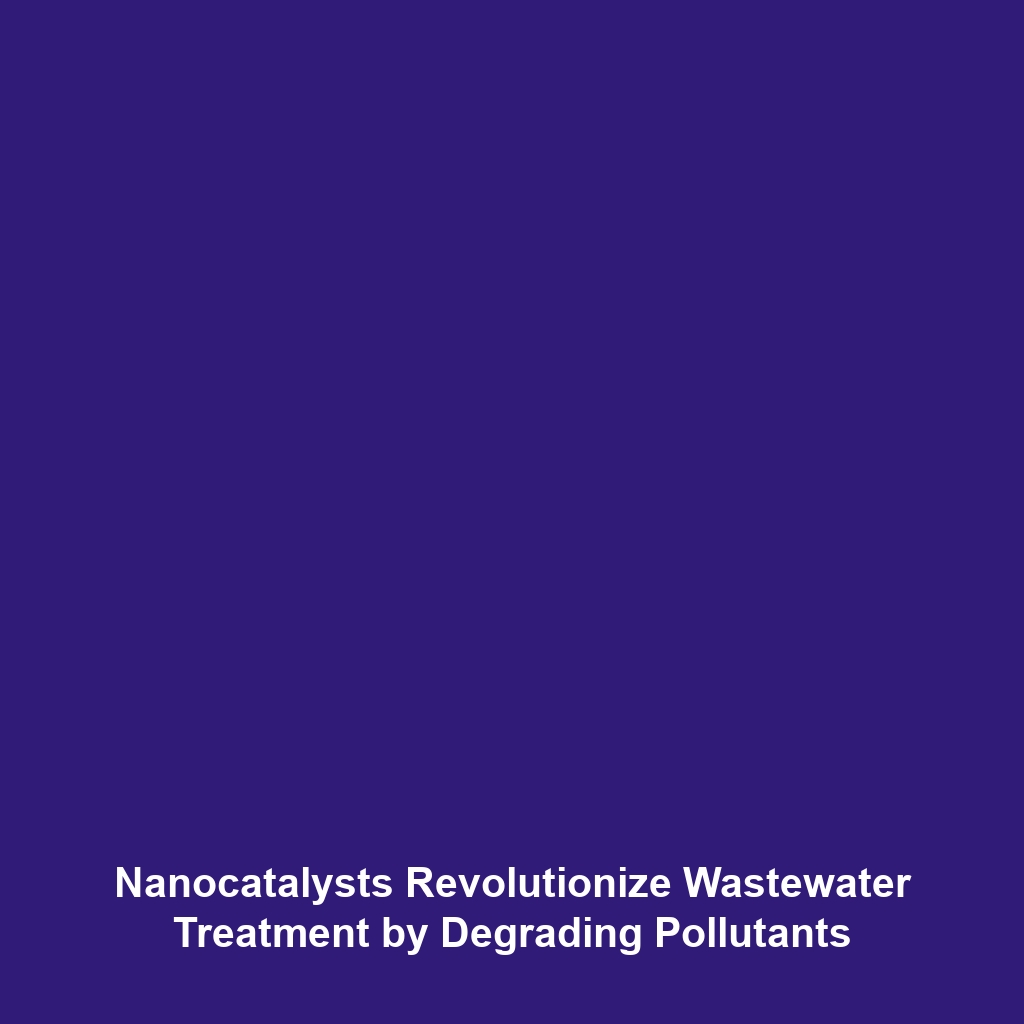Water Purification: Removing Pollutants with Nanomaterials
Introduction
As the global demand for clean water escalates, innovative solutions become imperative. Water purification using advanced nanomaterials presents a promising avenue to address water contamination challenges. This cutting-edge approach utilizes nanotechnology to enhance filtration methods, enabling the effective removal of pollutants on a molecular level. Leveraging properties unique to nanomaterials, researchers are developing more efficient, cost-effective, and sustainable water treatment systems that have the potential to transform water purification efforts worldwide. Understanding the significance of nanomaterials within this context is critical for both scientific advancement and environmental sustainability.
Key Concepts
Understanding Nanomaterials
Advanced nanomaterials are materials engineered at the nanoscale (1 to 100 nanometers) that exhibit unique chemical and physical properties. In water purification, these materials can:
- Increase Surface Area: Nanomaterials possess a higher surface-to-volume ratio, enhancing their interaction with contaminants.
- Improve Efficiency: They can operate effectively under various conditions, providing adaptability to diverse water sources.
- Enable Targeted Removal: Functionalized nanomaterials allow for the selective adsorption or degradation of specific pollutants.
Mechanisms of Action
Nanomaterials function through various mechanisms, such as:
- Adsorption: The process by which pollutants adhere to the surface of nanomaterials.
- Photocatalysis: Using light-activated nanomaterials that accelerate chemical reactions to break down contaminants.
- Membrane Filtration: Incorporating nanomaterials in membranes to enhance barrier properties against pollutants.
Applications and Real-World Uses
Applications of water purification using nanomaterials are rapidly evolving. Here are some significant real-world uses:
- Nanoscale Filters: These filters significantly enhance the removal of heavy metals and bacteria.
- Nanostructured Photocatalysts: Used in advanced oxidation processes to degrade organic pollutants in wastewater.
- Separator Membranes: Comprised of nanomaterials that improve desalination and wastewater treatment efficiency.
This demonstrates how nanomaterials are transforming traditional water purification methods, providing sustainable solutions for clean water access.
Current Challenges
While promising, several challenges remain in the study and application of water purification using nanomaterials:
- Scalability: Challenges exist in scaling laboratory results to industrial applications.
- Toxicity Concerns: Potential environmental and health impacts of nanomaterials need thorough investigation.
- Regulatory Framework: Lack of comprehensive regulations regarding the use of nanomaterials in water treatment.
- Cost-Effectiveness: Initial setup and maintenance costs may hinder widespread adoption.
Future Research and Innovations
The future of water purification using nanomaterials is ripe with potential innovations:
- Smart Nanomaterials: Development of systems that can adaptively respond to specific contamination levels.
- Hybrid Systems: Integration of nanotechnology with biological treatment processes for enhanced efficacy.
- Green Nanotechnology: Focus on environmentally friendly synthesis of nanomaterials to reduce ecological footprints.
Conclusion
Water purification through advanced nanomaterials represents a pivotal advancement in ensuring safe drinking water. With the capability to effectively remove pollutants and the promise of further innovations, the intersection of nanotechnology and water treatment is set to play a critical role in addressing global water quality challenges. Continued research and collaboration among scientists, environmentalists, and policymakers will be essential to overcoming current challenges and maximizing the benefits of these materials. For further reading on advanced nanomaterials and their applications, explore our overview of advanced nanomaterials.


